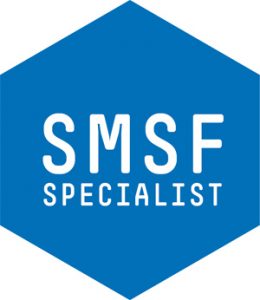It’s August, and this chilly winter and periodic lockdowns can’t end fast enough for many of us. One bright spot, along with the golden wattle at this time of year, is the golden performance of our athletes in Tokyo.
The economic fallout from on-again, off-again lockdowns continued in July. The annual rate of inflation rose from 1.1% to 3.8% in the June quarter. This was due to higher prices for childcare (which was free in the June quarter last year), petrol and goods in short supply due to supply chain and workforce disruptions. Even so, the Reserve Bank has said it won’t consider lifting interest rates until inflation is “sustainably” within its 2-3% target range.
The Australian economy is expected to contract and unemployment to rise in the September quarter, after the jobless rate fell from 5.1% to a 10-year low of 4.9% in June. Not surprisingly, consumer confidence as measured by ANZ and Roy Morgan fell to an 8-month low of 100.7 points in July. Retail trade fell 1.8% in June but remained 2.9% up on a year earlier.
There are positive signs though for Australian miners’ profits and dividends. Crude oil and natural gas prices are up around 50% this year, while iron ore prices are up 24% due to the gradual reopening of global economies and China’s strong growth, up by an annual rate of 7.9% in the June quarter. Record exports pushed Australia’s trade surplus to a record high of $13.3 billion in June. Australia’s housing boom is also increasing demand for materials, with housing construction hitting a two-and-a-half year high in the March quarter.
The Australian dollar fell one cent to around US74c in July.

A trusted investment vehicle
Family trusts are a popular and effective investment structure to manage and protect your family’s fortune, but you don’t have to be worth a fortune to benefit from having one.
Despite their appeal, they are not for everyone. Indeed, it is suggested that if your assets are less than $300,000, and that is not counting your super, then it may well not be worth your while.
But for those with sufficient assets, a family trust can be an effective way to protect your family’s assets and limit your tax liability at the same time. So how do they work?
What is a family trust?
A family trust is a discretionary trust, where assets are placed in the care of a third party, the trustee, who manages it on behalf of the beneficiaries.
Discretionary trusts are so named because the distribution each year of the income and capital gains earned by the trust to the beneficiaries is at the total discretion of the trustee.
Beneficiaries are members of the trust and might include parents, children, other close relatives, and their spouses. A beneficiary may also be a company.
Key benefits
As mentioned, the key benefits of a family trust are asset protection and tax minimisation. A trust provides protection from creditors in bankruptcy, but the contents of a trust can be included as part of the matrimonial pool when it comes to divorce.
All income of the trust, including realised capital gains, must be distributed each year. It is then included in the beneficiary’s assessable income and taxed at their personal tax rate.
As a result, a trust can work particularly well from a tax viewpoint, if you are on a high marginal tax rate but your beneficiaries are on low marginal rates. If all individual beneficiaries are on a marginal tax rate greater than the company tax rate, then a family trust may include a corporate beneficiary to reduce tax.
More flexibility
Another advantage of a family trust is that it offers a flexible, tax effective structure to accumulate wealth for retirement alongside superannuation.
Their flexibility also makes them particularly attractive for small business owners who may run the business through a company structure but hold shares in that company in a family trust. The trust can then direct different types of income such as rental income from your business premises, franked dividends from company profits or capital gains to different individuals.
A family trust can also help with succession, allowing you to pass control of the family trust to the next generation by changing the trustee, without triggering a tax event.
There are some disadvantages too. There is the loss of ownership as the trust now owns the asset, not you. Also, if the trust suffers an investment loss, those losses cannot be distributed to offset your personal tax liability but must remain inside the trust. And there are costs involved in setting up and managing the trust.
Setting up a trust
To set up a family trust you will need to consult a lawyer to create a trust deed. You will also need to do the following:
- Appoint a trustee and determine your beneficiaries
- Decide which assets to include in the trust (a wide range of assets including stocks, bonds, managed funds, cash, real estate, antiques and fine art can all be included)
- Apply for an ABN and a Tax file number (TFN) and open a bank account in the name of the trust.
It can cost some $2500 to set up the trust and there will be annual fees as you have to file with the Australian Tax Office each year. Stamp duty applies in both NSW and Victoria on establishment but not in other states.
What about testamentary trusts?
Another type of trust popular with families is a testamentary trust which is created within your Will and does not come into effect until your death. Similar to family trusts, they have the advantage in estate planning of providing tax and asset protection benefits for the future.
Family trusts are popular for good reason, but you need to make sure it is appropriate for your family’s circumstances. If you would like to know more, give us a call.
This advice may not be suitable to you because contains general advice that has not been tailored to your personal circumstances. Please seek personal financial advice prior to acting on this information.

New COVID-19 relief schemes explained
As we navigate ongoing lockdowns due to COVID-19 across Australia, here is a guide to the latest benefits you may be entitled to from the Federal and State Governments.
Australia-wide initiatives
The Pandemic Leave Disaster Payment (PLDP) is a program to support you, if you find yourself in a situation where you are unable to earn an income because you are required to self-isolate, quarantine, or are caring for someone with COVID-19. The payment provides a lump sum of $1,500 per fortnight and you will need to meet certain criteria, which does vary between states and territories.
A COVID-19 Disaster Payment (CDP) is available for workers who are adversely affected by a state public health order including a lockdown, hotspot or movement restrictions. Again, the eligibility criteria vary by state, as can the amounts.
In addition, Centrelink provides a one-off Crisis Payment for National Health Emergency payment for those affected by COVID-19. You would need to already be eligible for income support or in severe financial hardship and are required to quarantine or self-isolate or are caring for someone required to be in quarantine or self-isolation. You will only be able to access 2 Crisis Payments for National Health Emergency in a 6-month period.
New South Wales
- Due to the Sydney lockdown, as of July 2021, NSW residents may be eligible for a COVID-19 Disaster Payment. Eligibility criteria and dates vary by locations across the state.
- The Pandemic Leave Disaster Payment will provide $1,500 for each 14 day period you must self-isolate or quarantine, or are caring for someone who has COVID-19 or must quarantine or self-isolate, and unable to earn an income.
- From July 14, there is a 60-day moratorium on evictions for residential tenants who have lost 25% or more of their income due to stay at home orders.
- Businesses who suffer a 30% reduction in revenue due to the restrictions, which have a turnover between $75,000 and $250 million, can now apply for up to $100,000 in JobSaver grants a week.
- For businesses with a turnover between $30,000 and $75,000, the COVID-19 Micro Business Grant provides a fortnightly $1,500 payment, if your revenue has declined by more than 30%.
- Businesses now have the option to defer the payment of their payroll tax, including the 2020-21 annual reconciliation, July and August 2021 monthly return periods until 7 October 2021. Interest free payment plans will be available for up to 12 months.
- For businesses that have experienced at least a 30% decline in turnover, or for NSW businesses with grouped Australian wages of no more than $10 million, a 25% reduction of their 2021-22 payroll tax liability may be available.
Victoria
- The COVID-19 Disaster Program is available for eligible Victorians between July 16 and 27th period. Although this period has lifted you still may be able to access this payment if you are eligible. The opportunity to claim closes on August 12th for the July 16-22nd July period and on August 19th for the July 23-27th period.
- The Pandemic Leave Disaster Payment will provide $1,500 for each 14 day period you must self-isolate or quarantine or are caring for someone who has COVID-19 or must quarantine or self-isolate.
- Victorian Government COVID-19 Test Isolation Payment provides a payment of $450 for workers who are required to self-isolate while waiting for COVID-19 test results.
- The Business Continuity Fund provides relief for up to around 30,000 business, that continue to be impacted by capacity limits on businesses with a $5,000 grant. There are 24 eligible sectors (including restaurants & cafes, gyms and hairdressers).
For CBD businesses, that are also impacted by reduced foot traffic due to restrictions on staff allowed back into offices, you may also be eligible for an additional $2000 grant. To be eligible, for the Business Continuity Fund businesses must have received, or be eligible for the Business Cost Assistance Program round two. - The Licensed Hospitality Venue Fund 2021 will receive extra funding to provide grants of up to $20,000, to support licensed venues that continue to be impacted by the current restrictions. This grant recognises the higher operating costs of larger licensed venues. Licensed venues that have received or were eligible for the previous Licensed Hospitality Venue Fund. CBD venues will again, also have an additional $2,000 grant available.
- The Small Business COVID Hardship Fund provides grants of up to $5,000 to small businesses with a payroll of up to $10 million where the current restrictions have resulted in at least a 70% reduction in revenue.
- The Alpine Business Support Program will provide $5,000 – $20,000 grants to 430 Alpine based businesses, recognising the impact of restrictions of movement and limited interstate travel, throughout peak season. There is also an additional $5 million support to alpine resort operators and management boards.
- The Commercial Tenancy Relief Scheme has been reintroduced to assist eligible tenants with proportional rent relief and to support landlords assisting tenants. Eligible businesses must have experienced at least a 30% reduction in turnover and have an annual turnover of less than $50 million. Again tenants and landlords are encouraged to reach an agreement directly, the Victorian Small Business Commission (VSBC) will be available to provide mediation.
- The Victorian Energy Saver scheme is available to assist with paying energy bills.
Queensland
- In addition to the PLDP, workers in Queensland may be eligible for support and relocation incentives.
- Small and medium businesses impacted by the South East Queensland lockdown commencing 31 July 2021 may be eligible for a $5000 grant to use on business expenses. To be eligible, the business needs to have a turnover of more than $75,000 and an annual payroll in Queensland of up to $10 million and need to have at least a 30% reduction in turnover as a result of the lockdown.
- Grants are also available for large hospitality and tourism businesses operating in the 11 local government areas in lockdown, eligibility criteria apply. Applications open mid-August.
Australian Capital Territory
While the ACT has a number of smaller support packages in place to help the community, the primary COVID-19 relief scheme available is the $1,500 Pandemic Leave Disaster Payment.
Northern Territory
Similar to other states, if you can’t earn an income because you need to self-isolate or quarantine for 14 days, or need to care for someone with COVID-19, you may be eligible for the $1,500 Pandemic Leave Disaster Payment offered to Territorians.
Western Australia
On top of the state’s one-off 2020 $600 electricity bill credit, WA now offers the Pandemic Leave Disaster Payment.
South Australia
In addition to PLDP, one-off grants of $300 are available to eligible workers required to self-isolate.
Tasmania
In addition to PLDP, grants are available to eligible low-income casual workers or self-employed Tasmanians required to self-isolate.
If you have any questions about the grants available or whether you are eligible, please don’t hesitate to give us a call.

Market movements & review video – August 2021
Stay up to date with what’s happened in Australian markets over the past month.
Our August update video takes you through key economic indicators, as both markets and the economy react to the continued on-again, off-again lockdowns throughout across numerous states in July.
Please get in touch if you’d like assistance with your personal financial situation.
Authorised Representative | Professional Wealth Services Pty Ltd | PWS ABN: 58 174 609 776 | AFS Licence Number 312047 This advice may not be suitable to you because it contains general advice that has not been tailored to your personal circumstances. Please seek personal financial advice prior to acting on this information. Investment Performance: Past performance is not a reliable guide to future returns as future returns may differ from and be more or less volatile than past returns.























